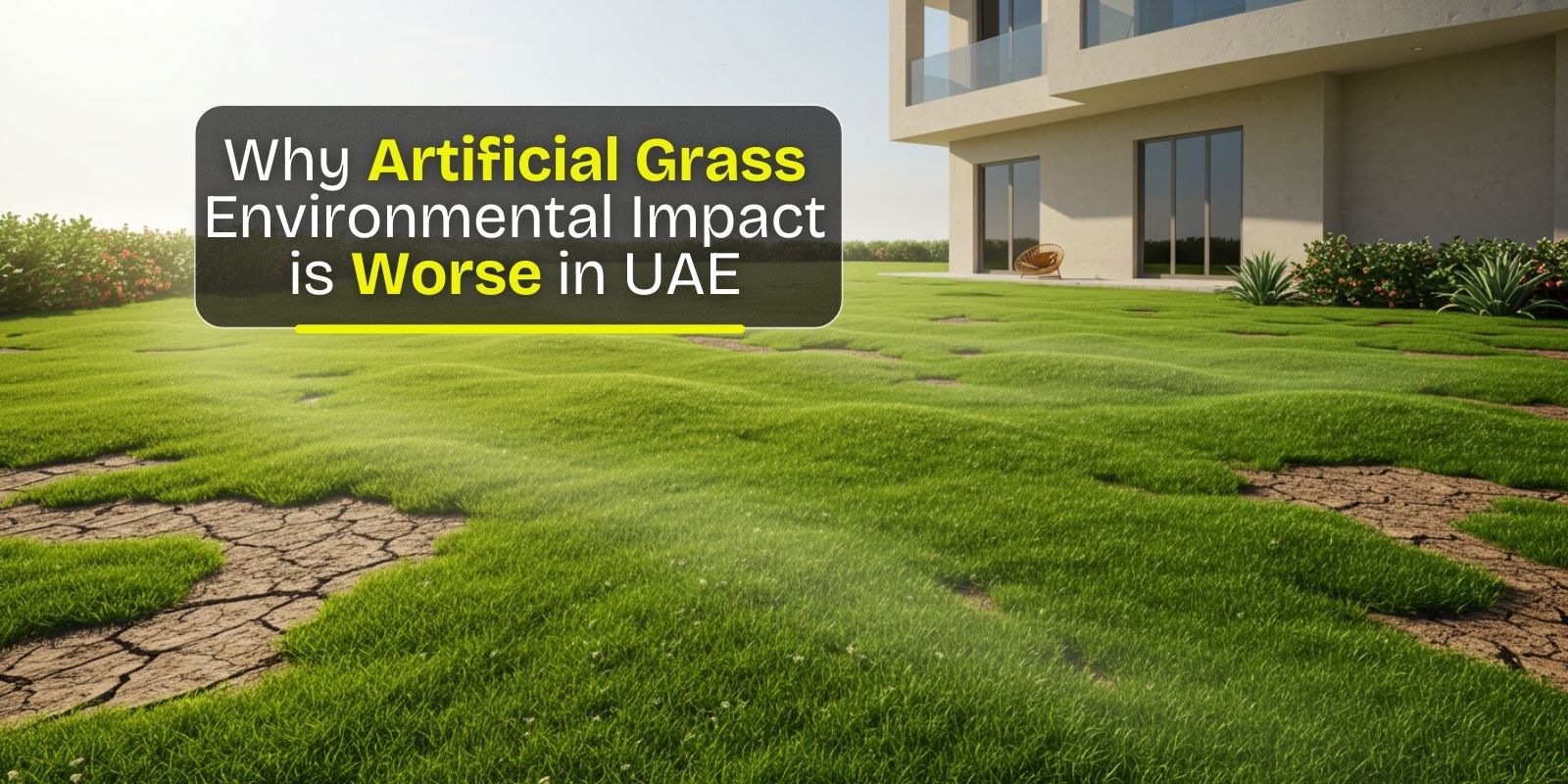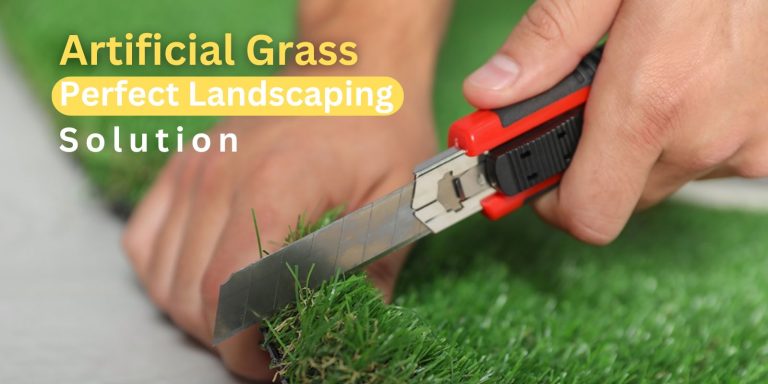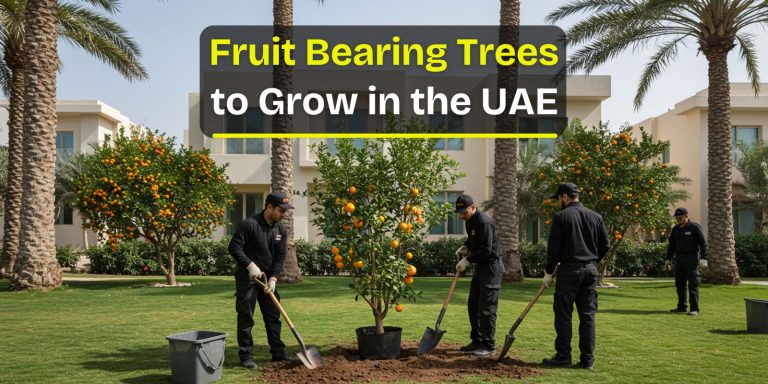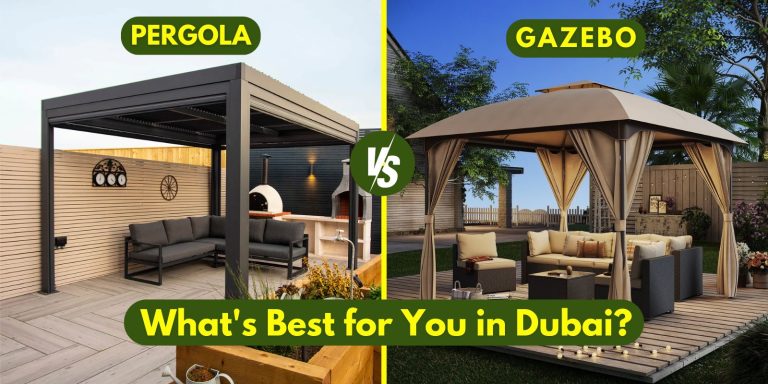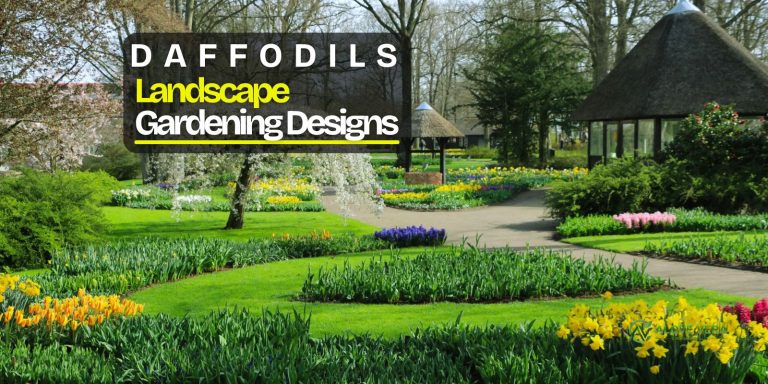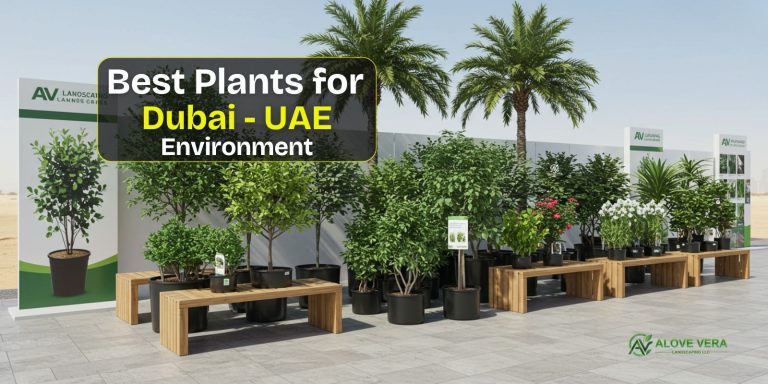Harmful Environmental Impacts of Artificial Grass in UAE
Artificial grass is often touted as a low-maintenance, always-green solution for villa lawns — especially appealing in arid regions like the UAE. Still, when considering the environmental impacts of artificial grass , it’s important to understand the full picture of its effects on our unique Arabian landscape.
1. Heat Retention & Surface Temperature
In Dubai’s intense heat, artificial turf can become dangerously hot. Rather than cooling through water evaporation like natural grass, synthetic surfaces absorb and retain more heat, often causing surface temperatures to skyrocket — even up to 140°F on hot days. The Washington Post
This not only makes it uncomfortable for bare feet but contributes to Dubai’s urban heat island effect, increasing cooling costs and energy demand. THISDAYLIVEArchitectural Digest
2. Microplastic Pollution
Artificial turf is made from a mix of plastics, rubber, and synthetic fibers. Over time, wear and weather cause these materials to break down and release microplastics into the soil and groundwater.
Given frequent sandstorms in the UAE, this dust and debris can carry artificial fibers into drainage systems and natural water sources, raising environmental impacts of artificial grass.
3. Manufacturing Footprint & End-of-Life Waste
Producing artificial turf consumes high amounts of energy, petroleum-based materials, and emits carbon emissions, adding to its environmental cost.
Plus, the turf’s lifespan—typically 10–20 years—still ends in waste. Recycling is complex and often not practiced, meaning many synthetic lawns end up in landfills.
4. Environmental Impacts of Artificial Grass on Biodiversity & Soil Health
When replaced with artificial grass, natural soil ecosystems lose air, water absorption, and nutrient recycling. Natural grass supports insects, microbes, and contributes to carbon absorption — none of which artificial turf does. THISDAYLIVE
5. Local Environment Challenges: Dubai’s Unique Context
Dubai’s landscape brings its own environmental impacts of artificial grass: extreme UV, heat, sand exposure, and dryness. Artificial lawns fade faster under UV, trap sand, and even encourage mold in humid coastal zones.
Alternatives to Artificial Grass for Sustainable Landscapes
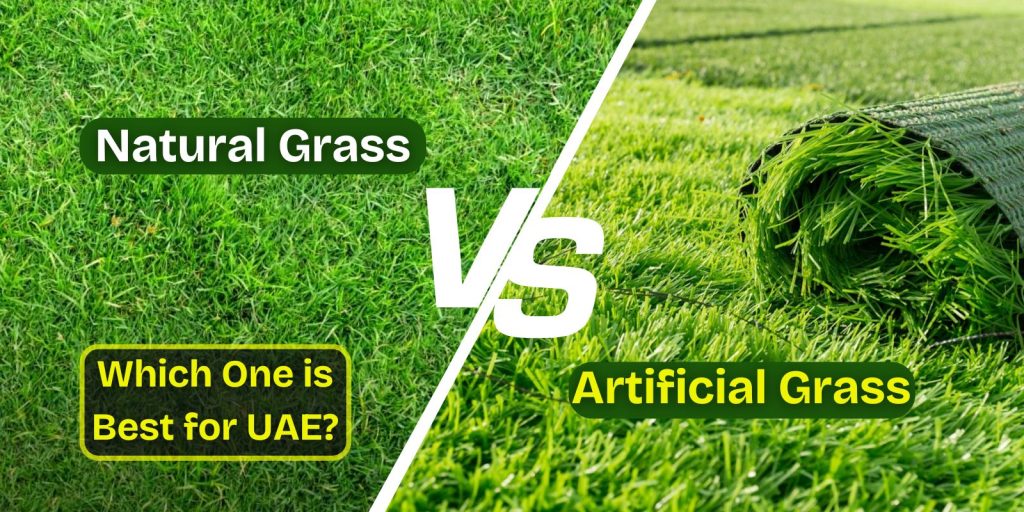
Deciding artificial turf vs natural grass doesn’t mean eliminating all green options. Consider these eco-friendly alternatives of equal beauty and better for the environment:
- Native or drought-tolerant grasses, such as Zoysia or Bermuda.
- Permeable surfaces and decorative stones that let water soak in.
- Low-water flowering plants, herbs, and ground covers.
These options preserve moisture, support ecosystems, and reflect thoughtful design.
How AV Landscaping Supports Green, Sustainable Landscaping
At AV Landscaping, we prioritize eco-conscious design for Dubai’s challenging climate. Instead of artificial turf, we use:
- Native grasses and plants adapted to heat and dryness
- Permeable, shaded play areas that blend beauty with cooling
- Design solutions that reduce heat gain and support biodiversity
While artificial turf may seem like a convenient option, the Environmental Impacts of Artificial Grass poses significant challenges—from heat island effects and microplastic pollution to biodiversity loss and added emissions.
If you’re planning a beautiful and sustainable garden in Dubai, and worried about the environmental impacts of artificial grass. Let AV Landscaping help you create an elegant outdoor space that respects both your lifestyle and the environment.

